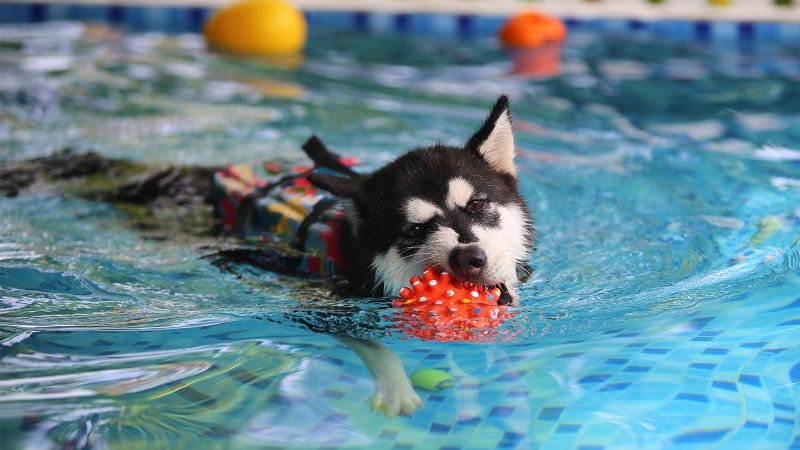I will never forget the first time we took our sweet puppy to swim. She was a tiny little thing, and the idea of letting her step into the murky lake water for her first swimming experience filled me with trepidation. We placed her gently onto a large rock in the water and just watched to see what she would do. She tentatively placed a paw down on the surface of the water, bringing new meaning to the phrase, “testing the waters,” and then she stepped right off the edge of the rock. The expression on her water-logged face when she came up for air showed her surprise that the water gave way. “What is this stuff?” she seemed to be asking us. It took a while, but eventually, she developed an understanding of the water and began to enjoy herself.
Fast forward a couple years, and good friends of ours welcomed a golden retriever into their family. When they asked if we could get the dogs together to go swimming, we thought it was a great idea! By the end of the day, Summer was teaching Lance to dive off the docks at the lake near our house. I daresay Lance’s first experience in the water went swimmingly. We’ve always wondered if Lance took to the water so easily because he was taught to swim by another dog.
This got me thinking, do you really need to teach your dog to swim? Aren’t dogs just born knowing how? And how should you teach your dog to swim? Let’s dive deeper...
Should You Teach Your Dog to Swim?
The answer to question #1 is a resounding YES! I have a friend who owns a pool and she told me that even though her dog does not particularly enjoy swimming, she puts him in the water at least once a year to remind him how to swim and to make sure he knows how to get out of the pool in the event that he falls in. After I read the heart-wrenching story of Dr. Patty Khuly’s bulldog who died after accidentally falling into a backyard swimming pool, I am further convinced of the importance of teaching a dog how to rescue himself should he get in trouble in the water.
Are Dogs Born Knowing How to Swim?
The answer is no, dogs are not born knowing how to swim. In fact, breeds like bulldogs, boxers, and basset hounds generally are not good swimmers, as a result of their anatomy and facial structure. These dogs should wear a life jacket as often as possible when near water and especially when they are a passenger on a boat.
How to Teach Your Dog to Swim
Now that we’ve established the importance of teaching your dog to swim, let’s cover the basics on how to proceed, the answer to question #3.
- Start in the shallow area of a pool or lake, preferably where your dog can touch the bottom.
- Put on your dog’s life jacket and leash. Walk him slowly into the water.
- Practice walking in the shallow water and back out so your dog knows how to exit the water safely in case he gets nervous.
- As you go deeper in the water and your dog needs to paddle in order to stay afloat, use your arm to provide support under his belly. This will encourage him to use all four limbs to swim, instead of just his two front legs which will tire him out more quickly.
- Keep swimming sessions brief so as not to exhaust your dog. Make sure to show your dog a safe way to exit the water.
- Follow sessions with a bath to remove any chemicals (from a pool) or algae (from a lake), plenty of praise and love, and some extra treats.
The Importance of Learning
Of course, taking along a swimming buddy of the four-legged variety may be an asset as well. Just like kids, a little healthy peer pressure may be all your dog needs to get him over any anxieties he has about the water. Remember that even if you don’t see your dog being enrolled in the next canine water games, he still needs to have some basic water sense. And it’s important to keep your eye on your dog at backyard parties and barbecues this summer. Consider enrolling in pet insuracne for peace-of-mind that should your pup get into trouble this summer, you can afford the best veterinary care available! Happy swimming!

